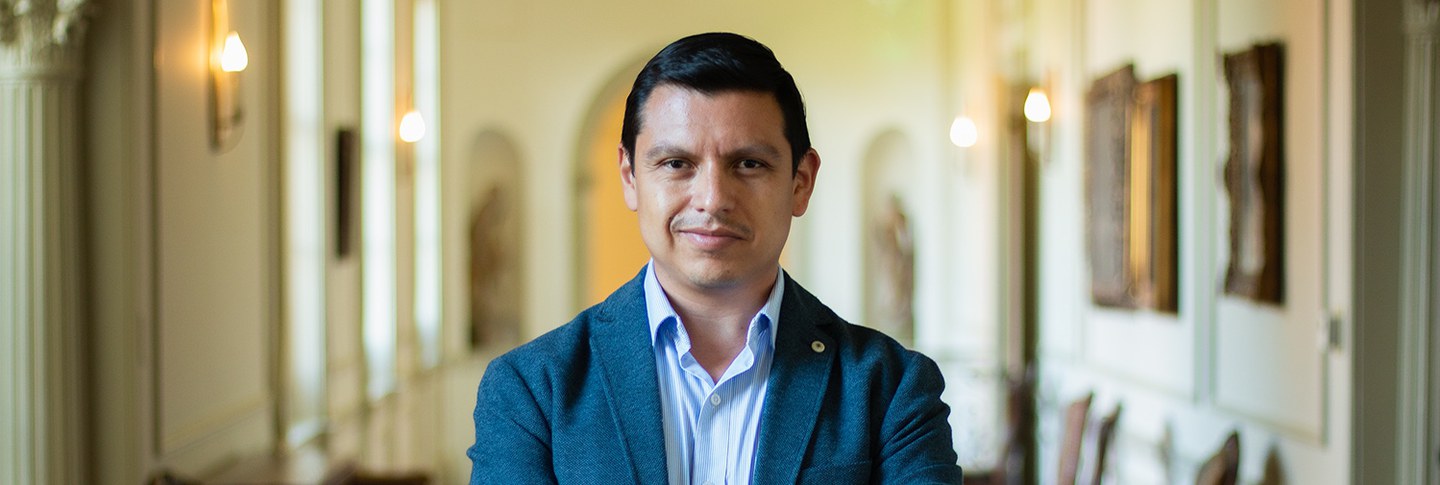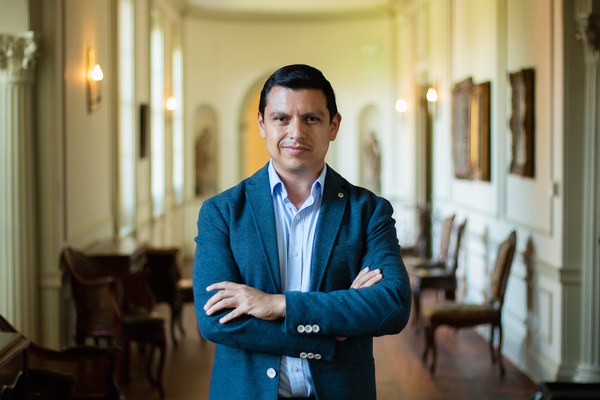Victor Castillo, who defended his dissertation in archaeology at the University of Arizona in May 2020, was a recent junior fellow in Pre-Columbian Studies. His research report, “Conquest as Revival in the Sixteenth-Century Maya Highlands: Excavations at Chiantla Viejo, Guatemala,” proposed a short but intense revivalist movement through which Spanish missionaries and Maya elites negotiated the introduction of Christianity.
Q&A with Victor Castillo
How did a major Maya ceremonial center inspire the archaeological site you study?
I excavated Chiantla Viejo, a small ceremonial center with just one small plaza, in the Maya highlands of Guatemala. I think the builders of Chiantla Viejo emulated and tried to copy the architecture of Zaculeu, the most important center in the region, at a very reduced and modest scale. For example, in terms of the layout of the Chiantla Viejo plaza, I think builders took inspiration from the main plaza of Zaculeu. That includes the location of the temple, the small, low ceremonial platforms in the middle, and the presence of a mound.
Zaculeu is one of the largest and longest-occupied sites in the Maya highlands, with occupation starting around 500 CE until the Spanish conquest in the sixteenth century—a timespan of a thousand years. The United Fruit Company actually excavated Zaculeu as part of a controversial restoration project to create a tourist attraction in western Guatemala. They did a decent job documenting the last stage of construction at the site, but they were in a hurry, and some of their excavation trenches are shallow. They also wanted to create something unperishable, so they used very aggressive reconstruction techniques, with concrete, steel, and other modern materials. I think the company chose the site not only because it’s impressive, with big pyramids, but also because it’s one of the few sites in the highlands for which there is a historical account written by a Spanish chronicler. But there are doubts about the accuracy of the narrative, which was written more than a century and a half after the events it tells.
We still have many questions about the history of Zaculeu, but its archaeological data is foundational—the reference to build any kind of interpretations in this region. For my research, it was also useful being able to consult rare publications in the Dumbarton Oaks library, especially a number of Guatemalan publications from the first half of the twentieth century.
What does Chiantla Viejo reveal about Maya revitalization?
From an anthropological and ethnographic perspective, when small groups are under stress, they engage in revitalization movements. This is especially typical with groups facing European colonialism, who are drawing on the resources of the past in order to negotiate their survival and secure their continuity in colonial settings.
At the onset of Spanish colonialism, I think the builders of Chiantla Viejo used the idea of Zaculeu as the most important center in the region to continue with their ceremonial and ritual behavior at a very reduced scale in this small town in the mountains.
Building mounds is a good example of how the Mam (the indigenous Maya group who built Chiantla Viejo) revived ancient architecture, styles, and construction techniques. Mound architecture was typical in the Maya highlands in the preclassic period, several centuries before the Spanish conquest—for instance at Cambote, a site close to Chiantla Viejo and Zaculeu. What I see at Zaculeu and then at Chiantla Viejo is the builders incorporating mound architecture into the plaza—a clear claim that the physicality of the plaza in the sixteenth century is connected with preclassic architecture.
How does your research challenge the notion of the “spiritual conquest of the Maya”?
The “spiritual conquest” has been a very popular model for historical research, but recently this model has been criticized because it represents the perspective of the colonizers—the Hispanic church and the Spanish empire. It’s about triumph and defeat. There’s not an in-between.
My research further contributes to debunking this myth of the spiritual conquest by emphasizing that after the Spanish conquest, at the same time these Mam-Maya nobles were claiming a Christian identity, they were still building traditional ritual pre-Hispanic architecture. They were engaged in a short but strong movement of joining resources to rebuild the site in the image of the most important pre-Hispanic ceremonial center in the region.
I do see some religious continuity after the military conquest and during the beginning of the Christianization of the Maya highlands. Maya groups had the chance to negotiate the continuity of some elements of their traditional Maya religion, although it happened at the expense of other elements. My research brings the material dimension showing continuity during the first organized efforts of religious change in this part of the Maya highlands.
Julia Ostmann is postgraduate writing and reporting fellow at Dumbarton Oaks. Photo by Elizabeth Muñoz Huber, postgraduate digital media fellow.

